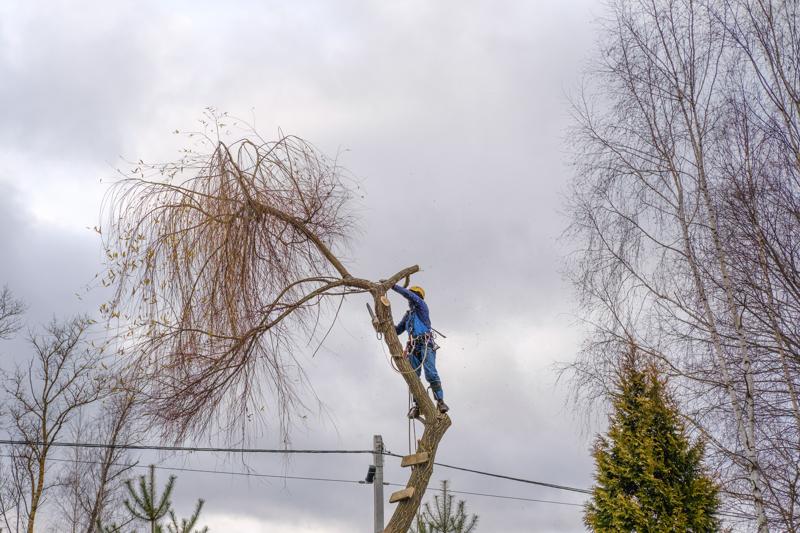Expert Checklist: Ways to Determine if a Tree Needs to be Cut Down

Tree removal is a difficult and potentially dangerous task. If a tree is dying or diseased or is in danger of falling, it may require removal to prevent damage to property and make sure that the tree is safe. How do you know if a tree needs to be cut down? This article will walk you through the warning signs to look out to and assist you determine when it’s time to call the professionals.
Dead or dying trees
One of the evident signs that a tree should be removed is when it is dying or dead. Dead trees are without leaves and may appear dead. If a tree doesn’t have leaves or any signs of new growth, it’s probably dead. The bark of a dead tree could be cracked, dry or peeling.
Trees with diseases
Trees with diseases could pose a danger to the other plants and trees in the area. The most common signs of disease on trees are dying leaves, wilted or yellowed branches, and mushrooms growing at the base or the trunk. If you think your tree may be diseased It is essential to have it inspected by a certified arborist.
Leaning Trees
Trees that are leaning towards one side could indicate of a failing root structure, and the tree may be at risk of falling. To identify if a leaning tree is at risk, look for cracks or breaks in the trunk and examine the soil at the tree’s base. If you see any of these indicators you should examine the tree by an arborist.
Overhanging Branches
The branches of overhanging trees that are in close proximity to buildings or power lines could pose a threat to the safety of your property and personal safety. If you are concerned regarding branches that hang overhanging you should be evaluated by an arborist to determine if pruning or removal is necessary.
FAQs
How can I tell whether a tree is dead?
An individual tree can be said to be dead if it lacks leaves and has no signs of new growth. Additionally, the bark of dead trees can be dry, cracked or peeling.
What are the symptoms of a dying tree?
Common signs of illness on trees include dying leaves, wilted or yellowed branches, and the growth of mushrooms at the at the base of the tree.
Is it safe to remove the tree by yourself?
Tree removal is a complex and potentially dangerous task. It’s best to delegate it to professionals to protect you and others.
Conclusion
When you’re dealing with tree removal, you need to be able to recognize the indicators that indicate that a tree needs to be cut down. By being aware of the indications of dying or dead trees, diseased trees tree leaning, and hanging branches, you can take steps to protect your property and the people around you. If you suspect that there is a tree in your yard that needs to be removed and you are unsure, contact Sydney Tree Cutting for a professional assessment. Our arborists are highly skilled and have the experience and equipment to take care of all your tree removal needs. Don’t take any chances with your security. If you believe that the tree that is on your property needs to be removed, please contact Sydney Tree Cutting today for a expert assessment. Our arborists are experienced and will provide you with the peace of mind that comes with knowing your property is in good with us. Call us now by dialing 1300 161 370 to schedule an appointment.





















